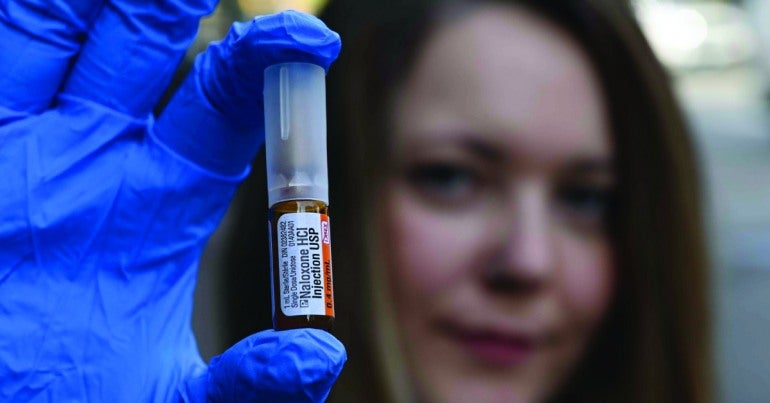 Janet Szliske | CUPE Communications
Janet Szliske | CUPE Communications
Tuesday Andrich’s regular routine as day shift coordinator for PHS Community Services Society can include almost anything. She deals with medical emergencies, cooks meals, and helps residents with everything from laundry to mental health support. She has even literally put out fires.
“We meet people where they are at,” explains Andrich, a member of CUPE 1004. “We have trauma-informed care practices and we support people in their goals with their lives.” Those goals can be as simple as taking medication regularly, using less drugs or getting a job.
Andrich also responds to overdoses, which often occur when residents use drugs laced with fentanyl. As a harm reduction worker, she needs to be prepared for many scenarios and has a variety of tools at her disposal, including Narcan or naloxone, oxygen, manual resuscitation bags, and more. “We just go with all of our things and respond to the overdose,” she says.
Andrich says her job is straightforward—she tries to keep people alive and healthy. “We don’t talk about all the people that have had brain damage because someone couldn’t get to them fast enough.” She notes that many people are less healthy than they were before they overdosed because no one got to them quickly enough to reverse the overdose in time to avoid additional health complications.
Sometimes they don’t make it in time.
Workers face a devastating reality on the front lines of the opioid crisis: people you know overdose and die. “You listen to people’s hopes and dreams and their stories—the traumas that they’ve been through and the ways that they have moved past them,” Andrich says. “You end up getting very close to people. And then you might find them dead on the floor one day.”
Harm reduction workers can experience traumatic stress, vicarious stress, compassion fatigue, and burnout. However, compared to some first responders, they have limited options when it comes to stress leave and wage loss protection. In B.C., the only leave provision for harm reduction workers is medical EI, which is 55 per cent of income, and workers’ compensation stress leaves are not always an option. “We try, but we often don’t get approved,” says Andrich. “It’s very unsustainable in terms of longevity in the job. We’re creating traumatized workers and just kind of eating them up and spitting them out.”
Andrich says that governments need to value the work CUPE members do and the people they serve. In addition to improving leave provisions, that includes decriminalizing drug use, taking action to reduce stigmas around drug use, and investing in more overdose prevention sites and free and widely-available drug testing kits.
Andrich also has some suggestions for members who want to help. “We can start small in our own communities, households and locals by looking at the words we are using,” she says.
“Instead of calling someone who’s using drugs or a person with drug problems a junkie or an addict, think about how a user listening to that would feel unsupported in a conversation with you. We’re all indoctrinated to say these things and to use words like this, and it’s about unlearning.”





